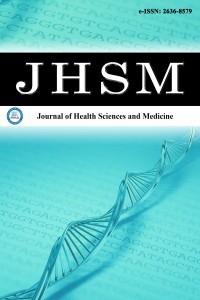
Journal of Health Sciences and Medicine
Yazarlar: ["Dursun Burak ÖZDEMİR", "Ahmet KARAYİĞİT", "Hayrettin DİZEN", "Bülent ÜNAL"]
Konular:-
DOI:10.32322/jhsm.1092191
Anahtar Kelimeler:Breast cancer,Red cell distribution width (RDW),Progesterone receptor,Perineural invasion,Overall survival
Özet: Objective: In this study, we aimed to assess the relationship between preoperative red cell distribution width (RDW) and the clinicopathological stage and prognosis of disease in patients operated for invasive epithelial breast cancer (BC). Material and Method: This retrospective cross-sectional study was conducted between January 2010 and January 2015 at a tertiary hospital in Turkey. A total of 280 patients who underwent surgery for histologically diagnosed invasive epithelial BC were included in the study. Results: The mean age of the patients was 53.31±12.58 years. The median follow-up time was 83 (IQR: 56.5–102) months. According to the results we found, there was a statistically significant positive correlation between progesterone receptor (PR) negativity and RDW values (p=0.015). In addition, the RDW values of patients with perineural invasion (PNI) were found to be significantly higher than those without (p=0.036). Conclusion: When the results of our study are evaluated together with prior reports, it can be said that higher preoperative RDW is associated with poor prognosis. When RDW is evaluated together with other possible prognostic factors, such as PNI and PR status, it has the potential to be a new, easily applicable and accurate marker to assess prognosis in patients with invasive epithelial BC.